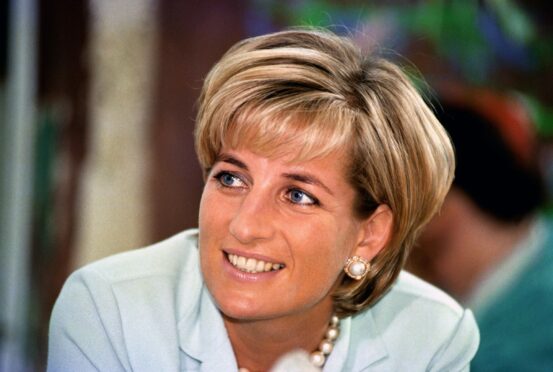
Sometimes it feels like Diana never really died. She’s still ubiquitous. The tributes marking her death now give way to tasters for Netflix’s The Crown, to be broadcast in November.
She’s also reborn for the Instagram age. The People’s Princess lives on in millions of smart phones, twirling across the Whitehouse ballroom with John Travolta for all eternity.
I wasn’t a big Diana fan. But I recall with absolute clarity the moment her death was announced. I was feeding a new born at dawn. We never moved from the sofa, watching sombre TV, me crying for a young mother I didn’t know, but who was my contemporary.
We’d attended the same glitzy London Christmas party not long before. Other guests went on manoeuvres, hoping for a morsel of conversation. She wore a little black sequinned dress, and held court beside an enormous pyramid of ponsiettas – the room’s festive centrepiece. I kept what I liked to think was a dignified distance, but see her still, sparkling under the lights.
I was shocked by my own shock – and grief – when she died. Although I was just a little younger and “grew up with Diana” as the cliché has it, I didn’t identify at all with the young aristocrat who first appeared in 1981.
In those post punk, early years of the first Thatcher government, “Lady Di” was the daily tabloid dish, a pretty decoy from the real story – the deindustrialization and mass unemployment ravaging communities.
25 years on France is still under the spell of Diana and the British monarchy
In her true blue engagement outfit complete with pussy bow, she even dressed like the PM! We wore army surplus, marched for the miners or rocked against racism. Diana was at the Polo, the film premier, the overseas tours – around the world in 80 designer outfits.
We did not see she was so young, vulnerable and, despite her social class, exploited. Married off to an older man who loved someone else, Diana was preened, paraded and expected to reproduce before she knew who she was. As she matured, she changed, and her work to support people with Aids and end the use of landmines is her great legacy.
The babe I held the day Diana died is now older than the Princess was when she married. Her generation, so sensitive to mental health issues, are rediscovering Diana, and empathising – and so am I.
I now see Diana through a mother’s eyes – and feel not just sympathy, but anger. Despite her social class, she was an establishment casualty – and not just of the buttoned-up palace courtiers.
This re-evaluation also springs from the injustice she suffered at the hands of another elite – the top brass at the BBC.
The Princess’s tragic story now plays out through pay outs – from the BBC to all those people Martin Bashir slandered in order to win Diana’s trust and gain that Panorama scoop. What the BBC did was far worse than any of the excesses of the red-tops or the paparazzi in their pursuit of Diana.
Bashir faked documents which falsely showed others to be corrupt, yet he has not been prosecuted. On Friday, the BBC paid £1.4 million to Diana’s charities, but this is about more than money and compensation.
BBC managers covered up this scandal for years, with one of them, Tony Hall becoming director general. They sacked whistle-blowers and re-hired Bashir. They are a disgrace to journalism and human decency – and the many fine people who work for the BBC.
Diana’s former Private Secretary Patrick Jephson, one of those slandered, said the Panorama interview and its aftermath led to the Princess’s paranoia, isolation and poor decisions, such as dismissing her security detail. Would she have been in that speeding car, driven by a drunk, had she been less isolated?
Good people lost their jobs, reputations and friendships. An already vulnerable woman lost her way, and in the end her life.
Apologies and compensation are easy for the BBC. What seems much an awful lot harder is honesty and accountability.
Joan McAlpine is a journalist, commentator and former MSP

Enjoy the convenience of having The Sunday Post delivered as a digital ePaper straight to your smartphone, tablet or computer.
Subscribe for only £5.49 a month and enjoy all the benefits of the printed paper as a digital replica.
Subscribe